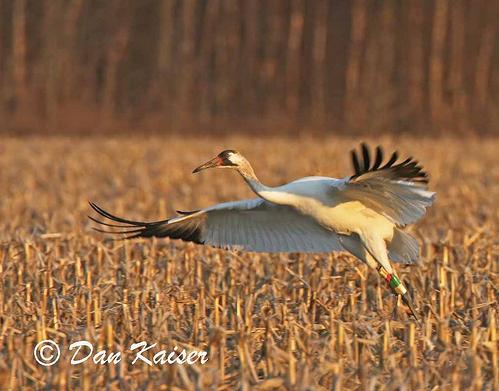
Where do whooping cranes live?
The whooping crane is only found in North America, and in a few select regions. It is believed that long ago there were thousands of whooping cranes living in North America, but due to habitat loss and other human interactions such as hunting, the population that was once flourishing was nearly diminished. I will talk more about this on my Conservation page, which you can access here. Due to the smaller numbers that still exist, whooping cranes are rare.
The last completely "natural" flock is from Wood Buffalo National
Park on the Alberta-Yukon border in Canadaian territories. The
flock breeds there, then migrates to their wintering site at the
Aransas National Wildlife Refuge on the Gulf coast of Texas, United
States. This annual migration path is approximately 2,500
miles long! The whooping crane flies this distance in day
light in 185-300 mile segments over the central United States.
The whooping cranes take breaks throughout the day during migration
to stop to feed and rest in fields and marshes. During the
night hours, they roost in shallow waters to rest and wait to begin
their long flight for the next day.
path is approximately 2,500
miles long! The whooping crane flies this distance in day
light in 185-300 mile segments over the central United States.
The whooping cranes take breaks throughout the day during migration
to stop to feed and rest in fields and marshes. During the
night hours, they roost in shallow waters to rest and wait to begin
their long flight for the next day.
Another flock of whooping cranes is found at the Necedah National Wildlife Refuge in Necedah, Wisconsin, United States, which was introduced in 2001. These whooping cranes do not have such a long migration to make, about 1,250 miles to the Chassahowitzka National Wildlife Refuge in Crystal Lake, Florida, United States. Also residing in Florida is a flock of non-migratory whooping cranes that live in Kissimmee Prairie Preserve State Park. I apologize for the inconvenience of this map being outdated, it is the best one that I could find that showed the most information!
So now that you know where you can find the whooping cranes, you might want to know what type of habitat these places are. Whooping cranes breed in shallow freshwater wetlands, marshes and prairie areas that are open and also grassy. The whooping crane needs the space to be open for two main reasons. The first reason is because of their large size, and the second reason because of their habit to run a few steps before heading to the skies for flight. During migration or in winter, the whooping cranes will inhabit saltwater marshes, shallow lakes, shallow lagoons, and grain fields.
If you don't live in these regions, whooping cranes can also
be found in captivity in
-Baraboo, Wisconsin, United States
- San Antonio, Texas, United States
-Patuxent, Maryland, United States
- Calgary, Alberta, Canada
If you'd like to see another example of a bird species that only lives on one particular continent, click here to visit a website about the saddle-billed stork, found only in Africa! If that's not of interest to you, you can move on to learn about how whooping cranes live in their environment. Check out my Adaptation page here to find out more, or visit my home page here.
